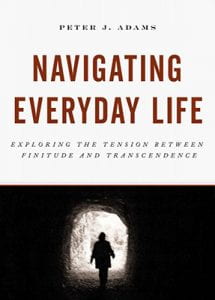Fifteen years have passed by since I was first diagnosed with celiac disease. It was news I did not wish to hear. Initially I was reluctant to take it on board, but I had little choice in the matter.
A few months later a letter arrived from our Ministry of Health which stated, rather pointedly, that my condition would continue “for life”. I stared with foreboding at those two words, “for life”; they had an ominous ring; was it for real? Had they got the right person? Is this a life sentence? It was certainly not the sort of phrase I expected to read in a formal letter.
Coeliac disease is not an earth-shattering condition. It doesn’t lead to irreparable damage to the body and is fairly easy to manage by simply avoiding eating anything containing wheat, barley or rye. But despite this, it took me considerable time to get used to the idea of this chronic condition being part of my life.
I remember one day, early on, I was walking through a large supermarket hunting out suitable food. Mounted up high on either side was aisle after aisle of breads, pastas, biscuits, pastries, cereals, sauces and canned and pre-prepared meals. The aisles seemed like canyons of gluten; tall walls of products closing around me and blocking me in; products with which I was fated to no longer have any relationship. I struggled to accept the existential dimensions of the permanency of this change.
In learning to accept and live with chronic health conditions, even those that are not life-threatening, a key part of the adaption has less to do with managing the condition and more to do with the reality of living with it as a permanent fixture.
In other words, it is the ‘thatness’ or existential nature of the change that can pose a more significant challenge than the ‘whatness’ or the details regarding what to do about it. The existential nature of these transitions is easy to overlook, despite the key role it can play in how a condition becomes incorporated into one’s life.
A health professional, typically a nurse or a doctor, is likely to be the first person to discuss details of a diagnosis for a chronic condition. This delicate conversation requires a mix of tailored information-sharing and diplomacy. It will normally cover details such as the name of the condition, its usual progression and possible treatments, as well as the critical message about how the condition will endure for life. It is this message of permanency that activates existential responses.
For many people, including myself, the idea of chronicity does not fully register in the first conversation. It seems to be happening in another place and in someone else’s circumstances. It surely does not relate to me.
But deep down within myself I have a nagging sense of the disruptive potential of such news. This unwelcome announcement could add a new layer of constraint. I can sense its disruptive potential, I can feel the existentials rumbling beneath the surface and I do not wish to go there. My first impulse is to block it or perhaps to find ways of throwing out the idea altogether.
Accordingly, those delivering such news need to be mindful of why we may be unwilling to accept what is being said. The message of permanency resounds at a fundamental level where logic and rationality appear less relevant. Full and conscious acceptance of the news will require time.
What we are more likely to need at this time is some space for it to be okay to be doubtful, to be inconsistent and to be permitted to both listen and not listen to what is being said.
As time moves on, and the idea of permanency begins to sink in, much work still lies ahead. The early days in this process often marked by dramatic swings between acceptance and rejection. On some days the situation seems hopeless and condition appears disastrous; on other days the condition is purposely ignored.
As an adolescent suffering asthma attacks, I can recall enduring nights awake struggling with my breathing. On bad nights I found myself sitting up struggling to breathe, terrified that I might lack the strength to complete my next inhalation. I felt trapped and confined within my body, stuck by myself with the clock ticking forward so terribly slowly.
My parents and friends were naturally very concerned. They wanted to help and they offered me a range of suggestions that might help manage or cure my asthma. They suggested inhalations, herbal remedies, breathing exercises, a balanced diet, even acupuncture and hypnosis.
I appreciated they were well-meaning and wanted to assist me in dealing with the condition. But I felt such talk diverted attention away from my main struggle which had less to do with how to manage asthma and more to do with adjusting to the idea of its permanence. At times I saw the condition as terribly unjust. At other times, I tried hard not to think about it, and pretended to myself that I could continue with all the activities I could do before.
I also avoided telling people about it in order to prevent further unwanted conversation on possible solutions. It was almost as though my condition had become public property. Others saw is as a collective challenge to cajole me into investigating cures.
What would be more helpful in assisting those adjusting to a chronic condition are conversations that focus less on the management of the condition and more on acknowledging and validating existential concerns. Such conversations can help with gradual exposure to the reality of the change.
Read more in the article: Responding to the existentials of non-life-threatening chronic conditions
Also, in the book: Navigating Everyday Life: Exploring the Tension between Finitude and Transcendence
Text by: Peter J. Adams


I think at the end you mean “What would be more helpful …” ?